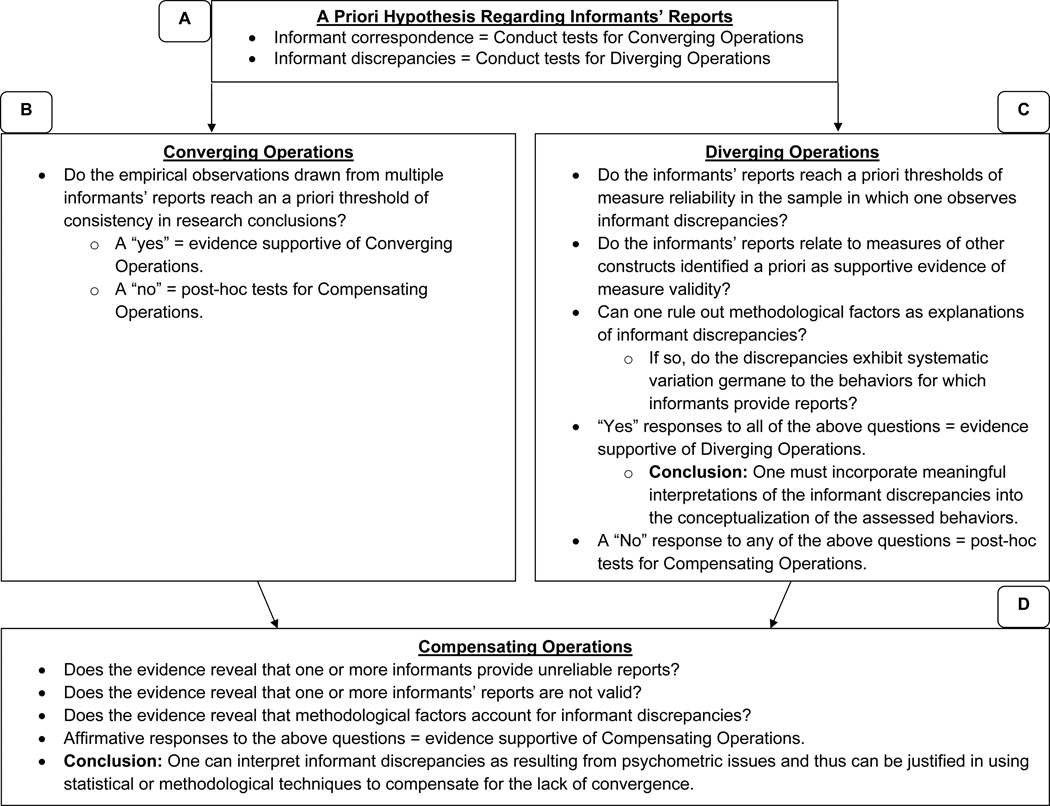Figure 2.
Graphical display of decision making processes based on the Operations Triad Model. To use this process, researchers must pose a priori hypotheses as to whether they expect converging findings or diverging findings (Figure 2a). Empirical questions outlined in the figure can then guide researchers’ tests of their expectations. For instance, these questions can be used to determine if the evidence supports the a priori expectation of converging findings (i.e., Converging Operations; Figure 2b). Questions can also be posed to determine whether the evidence supports the a priori expectation of diverging findings as yielding meaningful information about behavior (i.e., Diverging Operations; Figure 2c). If the evidence fails to support either of these hypotheses, researchers can test whether the observations are best explained by measurement error (i.e., Compensating Operations; Figure 2d).

